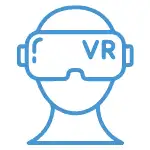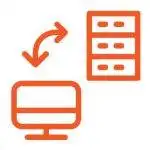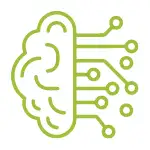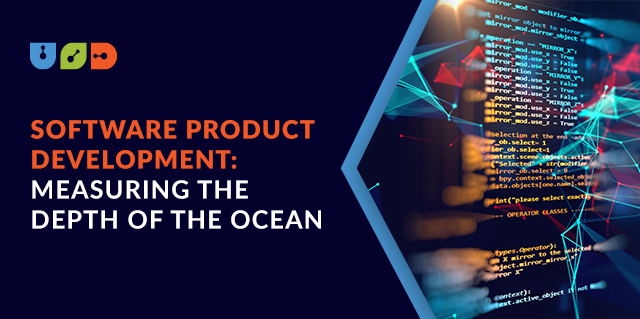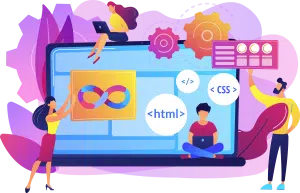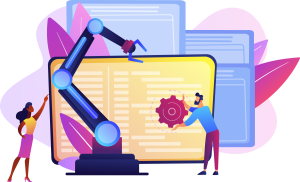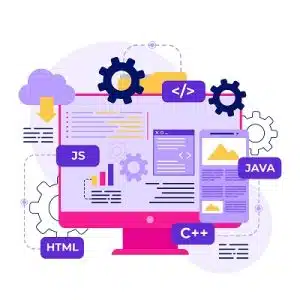Table of Contents
ToggleEntrepreneurs these days are seeking ways to grow into large enterprises digitally, aren’t you? SEO, digital marketing, social media, webinars, and digital transformation spheres are trending higher than ever. However, in order to gain exponential growth for your company, you need to evaluate the internal version of digitalization. Software product development isn’t just another fancy word that magically does wonders; it is a clear path that leads an enterprise toward its mission. By measuring the depth of the ocean, we ensure your vessel’s safe voyage to its destination while addressing various queries.
In this writing, we answer numerous questions like what is software product development? Why is it important? What is product development plan? Additionally, it explains the process, models, and technical documentation in software development. Moreover, the blog focuses on the latest software development trends, software project management, and types of solutions per their purpose. Furthermore, it will specify Custom Enterprise IT Solutions for digital transformation, such as ERP, CMS, CRM, SCM, and Employee Management Software. The final section will address why unique software development is the best choice for distinct business needs.
What is Software Product Development?
Software product development is the intricate process of conceiving, designing, programming, testing, and deploying software applications or systems. It involves the purpose and entire life cycle of a product, from the initial idea and planning stages to ongoing maintenance and updates. The primary goal is to create a high-quality, functional, and user-friendly software solution that meets the expectations of end users.
The multidimensional process typically begins with market research and analysis to identify opportunities and challenges. It proceeds to the formulation of a comprehensive development plan, encompassing design, coding, and rigorous testing phases. Collaboration among cross-functional teams, including developers, designers, and quality assurance professionals, is vital for success. Continuous feedback loops and iterative development methodologies aid in adapting to evolving requirements and enhancing product quality.
Successful software product development requires a blend of technical expertise, creativity, and a keen understanding of user needs. The result is a valuable and reliable software product that can revolutionize industries, streamline processes, and enrich user experiences. Grasping its true essence without its importance, plan, process, and methodologies won’t help much. Let’s take a look at the subsequent sections to harness its true potential for your endeavors.
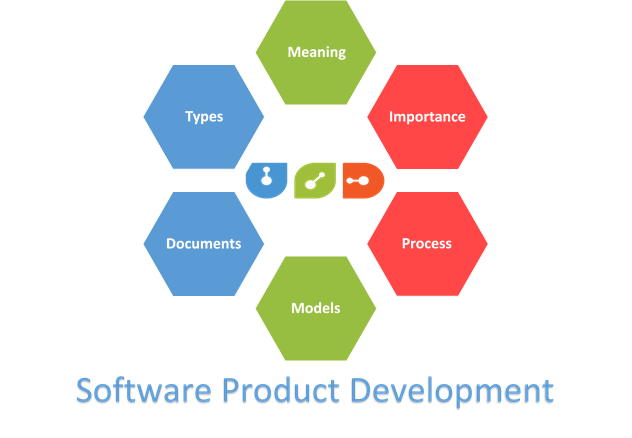
Why is Software Product Development Important?
Software product development plays a pivotal role in digitalization, driving innovation, efficiency, and transformation across various industries. Several key factors highlight its importance below:
1. Innovation and Technological Advancement
Software product development is at the forefront of technological innovation. It introduces new solutions and capabilities that propel industries forward. From cutting-edge business applications in artificial intelligence and machine learning to cybersecurity, healthcare, finance, and beyond.
2. Business Efficiency and Automation
Efficient software products streamline business processes and automate tasks, enhancing overall operational efficiency. From customer relationship management (CRM) systems to enterprise resource planning (ERP) solutions, software products enable organizations to optimize their workflows, reduce manual errors, and make data-driven decisions.
3. Superior User Experiences
Well-designed software products prioritize user experience, creating intuitive interfaces and seamless interactions. Whether it’s a mobile app, web platform, or desktop application, user-centric design is crucial for ensuring widespread adoption and customer satisfaction.
4. Global Connectivity and Collaboration
Software products facilitate global connectivity and collaboration. Cloud-based applications, communication tools, and project management software enable teams to work together across geographical boundaries. This interconnectedness enhances productivity, accelerates innovation, and supports the emergence of remote work structures.
5. Adaptability and Scalability
In the dynamic landscape of technology, adaptability and scalability are paramount. Software development methodologies like Agile allow for iterative improvements, quick adaptations, and the ability to scale solutions as businesses grow.
6. Competitive Edge and Prominence
Organizations that invest in innovative software products gain a competitive edge in the market. Staying technologically relevant and offering unique features or solutions can attract and retain customers, positioning a company as an industry leader.
7. Data Management and Analysis
Software products are instrumental in collecting, processing, and analyzing vast amounts of data. This data-driven approach empowers businesses to gain valuable insights, make informed decisions, and identify trends, contributing to strategic planning and future-proofing.
What is a Product Development Plan?
A Product Development Plan is a strategic document that outlines the entire process of bringing a new product from concept to market. It serves as a roadmap, guiding the development team and stakeholders through each phase of the product lifecycle. This comprehensive plan is crucial for aligning efforts, managing resources effectively, and ensuring that the final product meets the intended goals and market needs. The essential components of a Product Development Plan typically include:
1. Idea Generation and Conceptualization
It involves Identifying opportunities, conducting research, and brainstorming ideas for a new product. To begin with, marketers define the existing problem the product solves and establish its unique value proposition.
2. Market Analysis
They Analyze the target market, competition, and potential customer base. Understanding the market trends, demands, and gaps that the new product can address aids in preparing strategies.
3. Feasibility Study
They Assess the technical, financial, and operational feasibility of the product. It includes the evaluation of potential risks and challenges that may arise during development.
4. Design and Development
Product managers outline the product specifications, features, and design requirements. They define the development process, including technology stack, milestones, and timelines.
5. Testing and Quality Assurance
QA testers outline the testing protocols and quality assurance measures to ensure the product meets preset standards. They Identify key performance indicators (KPIs) for evaluating success.
6. Marketing and Launch Strategy
A comprehensive marketing plan includes branding, positioning, and promotional activities. Marketers plan the product launch, considering timing, platforms, end users, and user training.
7. Distribution and Sales
Sales professionals decide the distribution channels, sales strategy, and pricing models. They also consider partnership scenarios, if applicable, to expand market reach and revenues.
8. Post-Launch Support and Improvement
Managers formulate strategies for customer support, feedback collection, and ongoing product improvements. They establish a process for addressing bugs, updates, and customer inquiries.
Software Product Development Process
The Software Product Development Process is a systematic approach to creating and delivering high-quality software products. It involves a series of stages, each with its own set of activities, goals, and deliverables. While specific methodologies may vary, a common framework often includes the following key phases:
1. Requirement Gathering
The first phase involves brainstorming, market research, and requirement gathering. Its goal is to identify a viable product concept that addresses a specific need or problem of the business. End users define the pain points in the legacy systems and their requirements for the product.
2. Development Plan
Extensive planning is essential for a product that solves complex problems. It includes defining project scope, setting goals, creating timelines, allocating resources, and project deliverables or KPIs. Additionally, the planning stage often involves risk assessment and mitigation strategies.
3. UI/UX Design
The UI/UX design focuses on creating the architecture, user interface (UI), and overall system design. It involves translating the conceptual ideas into a blueprint that developers can use for developing programs. User experience (UX) is at its core to provide an assistive user journey.
4. Programming and Coding
Developers begin writing code, scripts, and APIs to meet the design specifications. The actual software is built in this stage with integrations. Developers must follow coding standards, collaborate effectively, and use version control systems to manage code changes.
5. Technical Testing
Rigorous testing is inevitable to identify and rectify bugs, ensuring functionality aligns with requirements by validating its performance and reliability. It includes unit testing, reliability testing, integration testing, system testing, and user acceptance testing, among a few others.
6. Deployment
Once the software passes QA testing, it is ready for release and deployment to the production environment. Deployment involves making the software available to end-users, whether through download, installation, or serverless cloud, to access online.
7. Maintenance and Support
After the deployment, ongoing maintenance is essential for addressing issues, releasing updates, and ensuring its compatibility with evolving technologies. It also involves providing customer support and addressing user feedback to pass on to the management for any improvements.
8. Iterative Improvements
Many software development processes, such as Agile, emphasize iterative development. After the initial release, feedback and insights from users assist in informing subsequent development cycles. It allows for continuous improvement and adaptation to changing requirements, usually through CI/CD pipelines and DevOps.
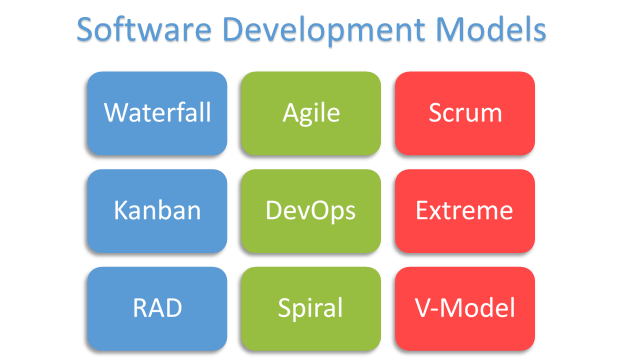
Software Development Methodologies
Software development methodologies are frameworks or processes that guide the development and maintenance of software systems. Different methodologies offer varying approaches to tasks such as planning, structuring, and controlling the process of developing an information system. Find below the descriptions of some of the most common software development methodologies.
1. Waterfall Model
The Waterfall model is a linear and sequential approach where development progresses through phases like requirements, design, implementation, testing, deployment, and maintenance. Each phase must be completed before moving on to the next.
2. Agile Methodology
Agile is an iterative and incremental approach emphasizing flexibility and collaboration. It breaks the project into small, manageable parts called iterations, allowing for continuous feedback and adjustments. Scrum and Kanban are popular Agile frameworks.
3. Scrum
Scrum is an Agile framework that divides work into time-boxed iterations called sprints. It promotes cross-functional teamwork, frequent inspection, and adaptation. Scrum includes roles like Scrum Master, Product Owner, and Development Team.
4. Kanban
Kanban is a visual management method for software development. Work items are represented on a board, and developers pull tasks as they have capacity. It focuses on continuous delivery and encourages a steady workflow.
5. DevOps
DevOps is a culture and set of practices that aim to unite software development (Dev) and IT operations (Ops). It emphasizes automation, collaboration, and continuous delivery, aiming to shorten the development lifecycle and deliver high-quality software.
6. Extreme Programming (XP)
XP is an Agile methodology that focuses on producing higher-quality software through practices like pair programming, continuous integration, test-driven development, and frequent releases. It prioritizes customer satisfaction and responsiveness to changing requirements.
7. Rapid Application Development (RAD)
RAD is an incremental software development methodology that emphasizes quick development and iteration. It involves user feedback, prototyping, and swift iterative development cycles.
8. Spiral Model
The Spiral model combines elements of both Waterfall and iterative development models. It incorporates risk assessment and allows for incremental releases. Development progresses in a spiral fashion through planning, risk analysis, engineering, and evaluation.
9. Verification and Validation Model (V-Model)
The V-Model is an extension of the Waterfall model where testing is integrated into each stage of development. The phases on the left side represent development, and the corresponding phases on the right side represent testing activities.
What is Technical Documentation in Software Development?
Technical documentation in software development is a critical component that provides comprehensive and detailed information about a software product. It serves as a reference for developers, testers, and other stakeholders involved in the software development process. Well-structured technical documentation enhances the understandability of the software, aids in troubleshooting, and facilitates collaboration among team members. It typically includes various types of documents, each serving a specific purpose, such as the following ones.
1. Requirements Document
The Requirements Document outlines the functional and non-functional requirements of the software. It serves as a foundation for the development process, helping teams understand what the software has to achieve.
2. Design Document
The Design Document elaborates on the architectural and technical aspects of the software, detailing how it caters to the requirements.
Technical Documentation Templates:
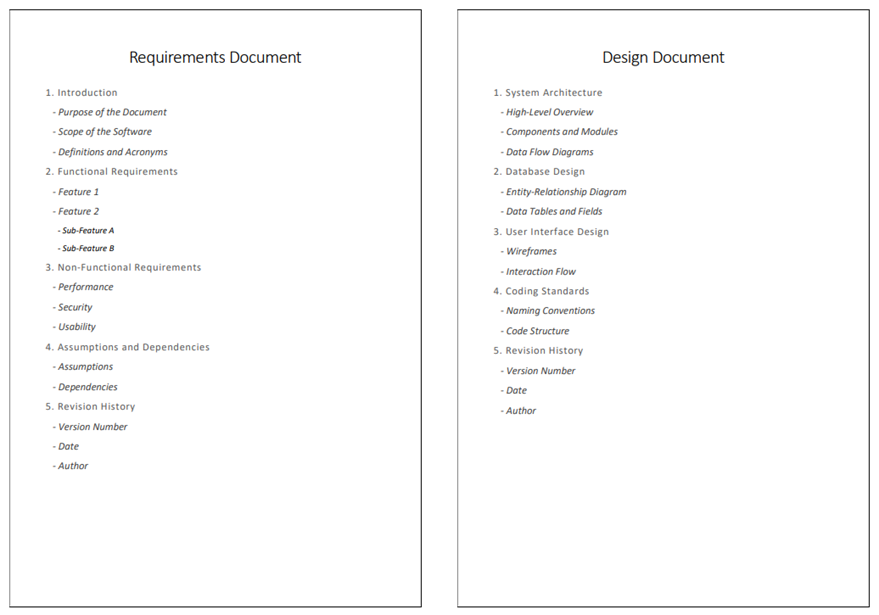
3. Test Plan
The Test Plan document outlines the strategy, scope, resources, schedule, and approach for software testing. It ensures that all aspects of the software are systematically tested to meet quality standards.
4. User Manual
The User Manual provides end-users with instructions on how to use the software. It includes information on installation, configuration, functionality, and troubleshooting.
Technical Documentation Templates:
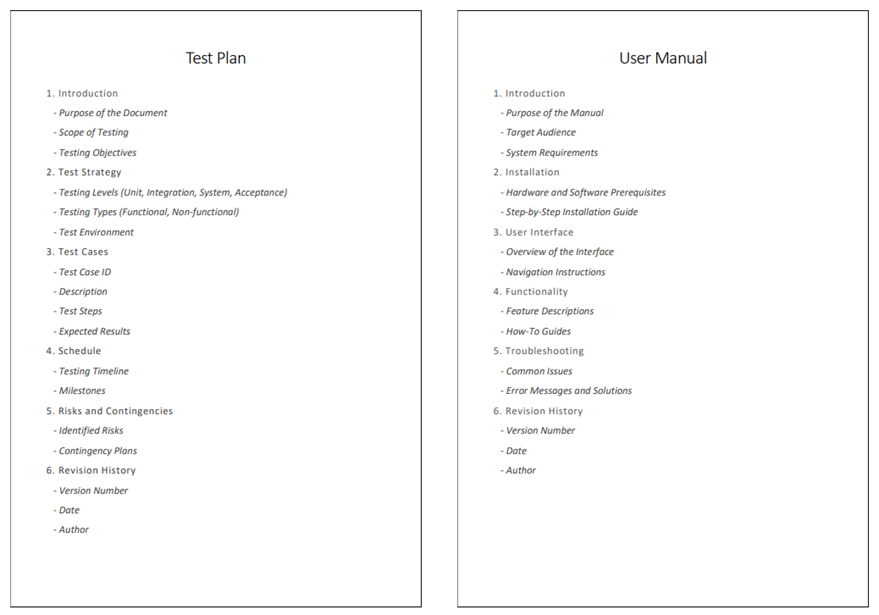
5. Change Log
The Change Log documents all changes made to the software, including updates, bug fixes, and enhancements. It provides a historical record of modifications to help developers and stakeholders track the evolution of the software.
6. System Documentation
System Documentation provides an in-depth overview of the software’s architecture with its components and dependencies. It serves as a reference for developers and administrators responsible for maintaining and troubleshooting the system.
Technical Documentation Templates:
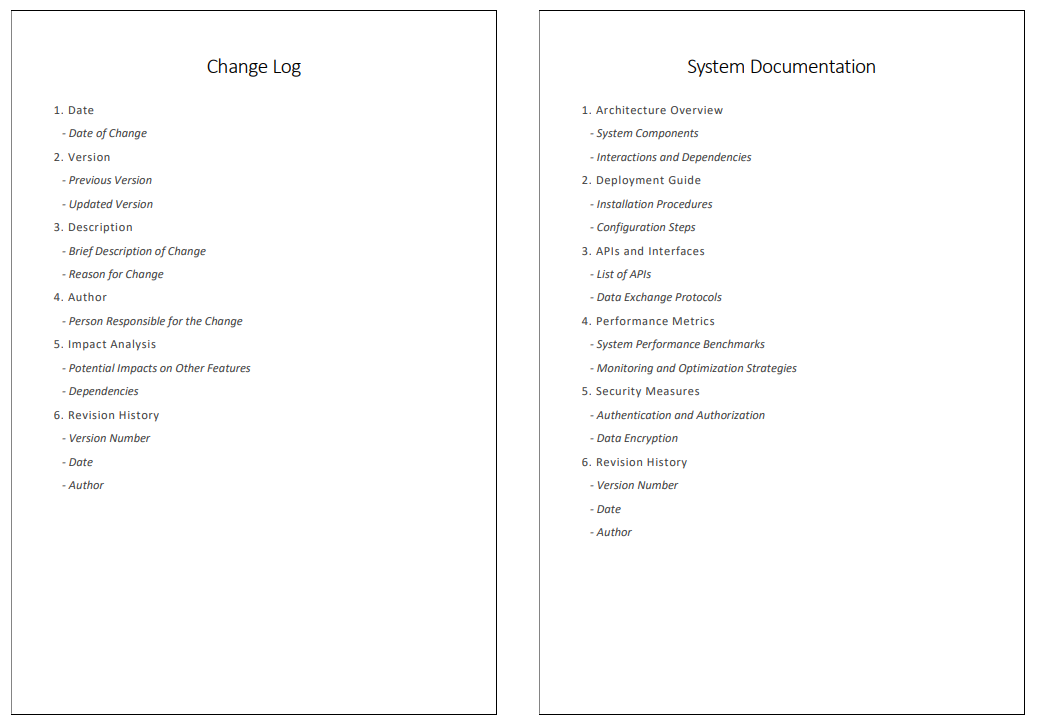
7. API Documentation
API (Application Programming Interface) documentation is crucial when developing software that interacts with other systems or services. It outlines the functions, endpoints, parameters, and responses of the API, providing developers with suitable information to integrate APIs effectively.
8. Compliance and Regulatory Documentation
In industries with specific compliance and regulatory requirements (e.g., healthcare, finance), documentation is necessary to ensure that the software adheres to legal standards and industry regulations. This documentation may include security protocols, data protection measures, and other compliance-related details.
9. Release Notes
Release Notes provide information about the latest version or release of the software. They include details about new features, enhancements, bug fixes, and any other changes made in the current release. Release Notes help users and stakeholders understand what to expect and any actions they may need to take after updating the software.
10. Training Documentation
Training Documentation is essential if the software is used by individuals who require guidance on how to use the system effectively. It includes tutorials, manuals, or guides to help users navigate the software and perform key tasks.
Technical Documentation Templates:
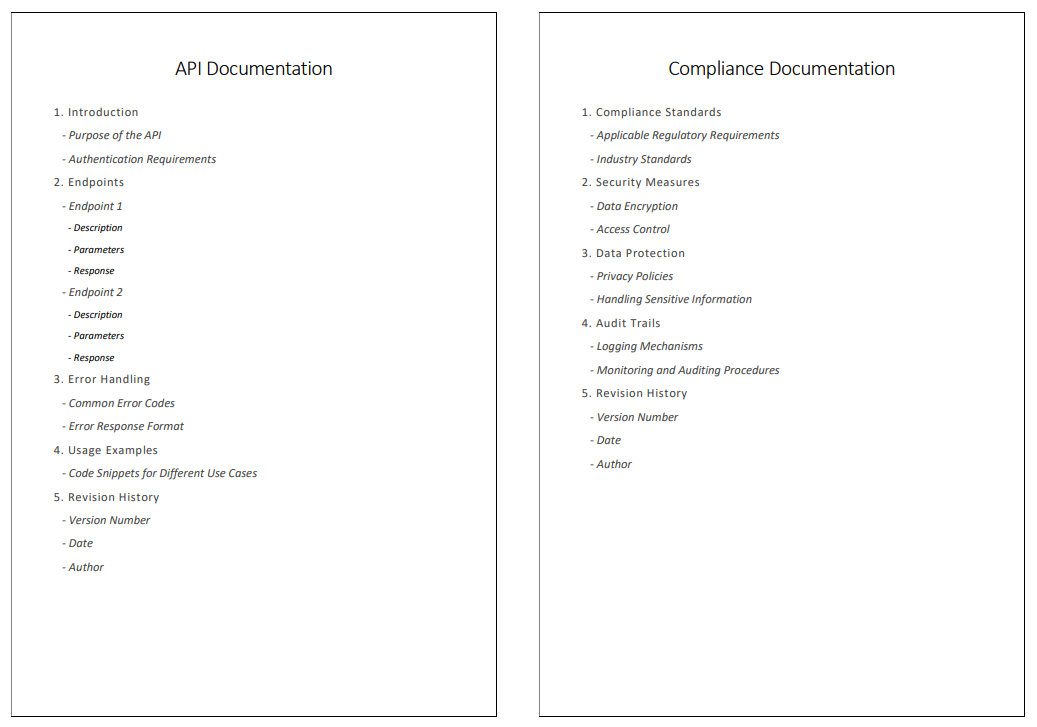
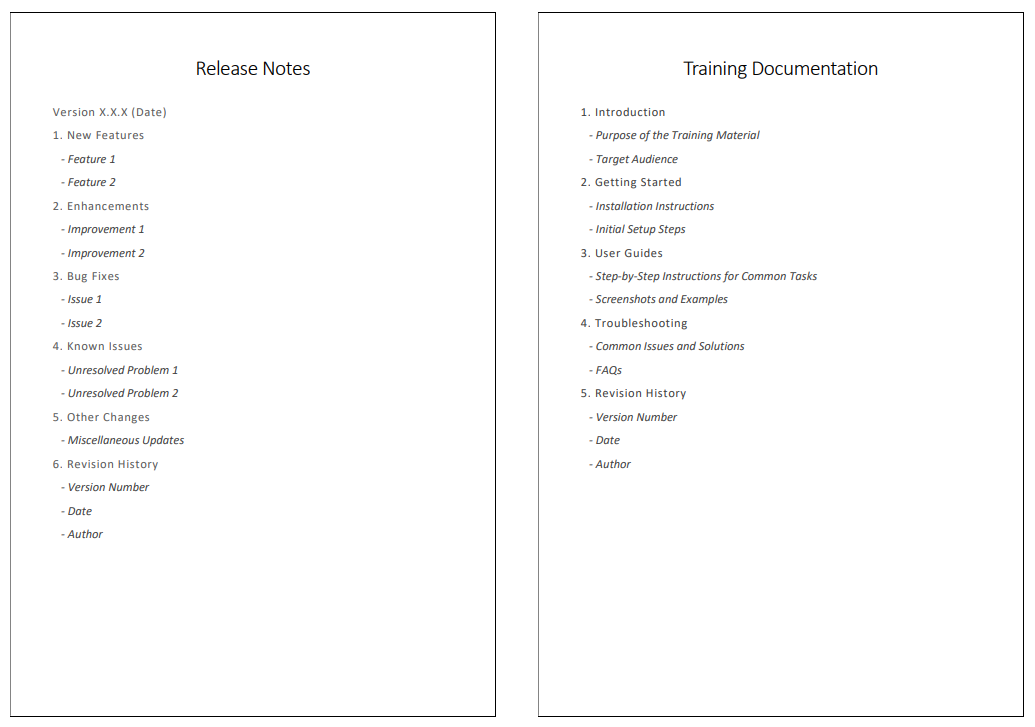
Latest Software Development Trends 2024-2026
Solution design and engineering is a highly dynamic industry with frequent advancements and emerging technologies. The ever-evolving industry presents new opportunities at every turn, not even requiring technical knowledge or coding skills. Review the following trends that are going to impact the upcoming three years, if not more.
1. Artificial Intelligence and Machine Learning
Integrating AI and machine learning into software applications is a prominent trend. Developers are leveraging these technologies for enhanced data analysis, pattern recognition, and automation. From chatbots and virtual assistants to predictive analytics, AI and ML are transforming how software systems operate and interact.
2. Low-Code and No-Code Development
Low-code and no-code platforms are gaining popularity, enabling developers and even non-developers to create applications with minimal manual coding. The trend is aiming to accelerate development processes, reduce time-to-market, and democratize app development.
3. DevOps and Continuous Integration/Continuous Deployment (CI/CD)
DevOps practices, along with CI/CD pipelines, continued to be essential for achieving seamless collaboration between development and operations teams. These methodologies automate the software delivery process, ensuring faster and more reliable releases.
4. Microservices Architecture
Microservices architecture is a prevailing trend, emphasizing the development of modular and independently deployable services. It offers scalability, flexibility, and easier maintenance compared to traditional monolithic architectures.
5. Edge Computing
With the rise of Internet of Things (IoT) devices and the need for real-time processing, edge computing is gaining traction. It involves dispersing computing power, allowing data processing to occur closer to the source, reducing latency, and enhancing performance.
6. Blockchain Technology
Blockchain is increasingly reaching beyond cryptocurrency and non-fungible tokens (NFTs). Its secure and decentralized nature made it valuable for DApps in supply chain, healthcare, and finance. Smart contracts automate contractual agreements, with notable applications through solidity development and DAOs.
7. Progressive Web Apps (PWAs)
Progressive Web Apps continued to be a trend, offering a hybrid between web and mobile applications. PWAs provided a responsive and app-like user experience, improved performance, and offline capabilities.
8. Cybersecurity Integration
With the growing frequency and sophistication of cyber threats, cybersecurity becomes integral to the software development process. Cybersecurity experts are integrating security measures at every stage, adopting practices like DevSecOps to ensure robust protection.
9. Augmented Reality (AR) and Virtual Reality (VR)
AR and VR technologies are making their mark in software development, particularly in gaming, healthcare, and education. Developers are discovering innovative ways to incorporate immersive experiences into applications, using AR/VR.
10. Quantum Computing
While still in the early stages, the exploration of quantum computing is gaining attention. Developers are looking into the potential of quantum algorithms for solving complex problems that traditional computers struggle with.
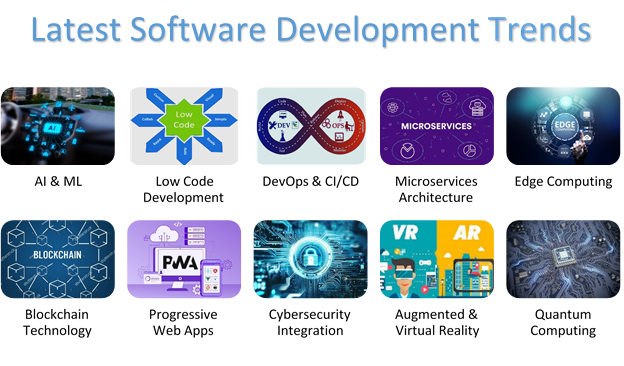
What is Software Project Management?
Software Project Management is a specialized discipline that involves planning, organizing, and overseeing the development of software systems from initiation to completion. The primary goal is to deliver high-quality software within specified timeframes and budget constraints while meeting the project’s objectives and stakeholder expectations. It is a crucial aspect of the software development lifecycle, ensuring that projects are executed efficiently and effectively. Following are the key aspects of Software Project Management.
1. Planning
The project planning phase involves defining the project scope, objectives, timelines, and resources required. It includes creating a roadmap that outlines tasks, milestones, and dependencies. Effective planning sets the foundation for a well-organized and controlled development process.
2. Resource Management
Identifying and allocating resources, including personnel, tools, and technologies, is essential for project success. Project managers must optimize resource utilization, ensuring that team members have the necessary skills and capacities to fulfill their roles.
3. Risk Management
Software projects often face uncertainties and risks that can impact timelines and deliverables. Project managers assess potential risks, develop mitigation strategies, and establish contingency plans to address unexpected challenges.
4. Communication and Collaboration
Effective communication is critical in software project management. Project managers facilitate communication among team members, stakeholders, and other relevant parties. Collaboration tools and methodologies, such as Agile, promote regular interaction and adaptability.
5. Monitoring and Control
Continuous monitoring of project progress against the established plan is crucial. Project managers track key performance indicators, identify deviations from the plan, and implement corrective actions when needed. It ensures that the project stays on course and meets objectives.
6. Quality Assurance
Ensuring the quality of the software being developed is a central responsibility. Project managers implement processes and methodologies for quality assurance and testing, verifying that the software meets predefined standards and specifications.
7. Documentation
Comprehensive documentation is integral to project management. It includes project plans, requirements documents, progress reports, and other relevant documentation. Clear documentation enhances transparency, facilitates knowledge transfer, and provides a reference for future phases or maintenance.
8. Closure and Evaluation
The closure phase involves finalizing project deliverables, obtaining stakeholder acceptance, and formally closing the project. Post-project evaluations assess what went well or what could be improved and gather insights for future projects.
Types of Software Solutions per Their Purpose
Software solutions are categorized based on their intended purpose and functionality, serving diverse roles in the realm of computing. Broadly classified, software can be categorized into System Software and Application Software.
1. System Software
System software forms the foundational layer of a computer’s software architecture. It provides essential services and interfaces for the efficient operation of hardware or software applications.
a) Operating System
The Operating System (OS) is a core component that manages hardware resources and provides a user interface. It controls the execution of application programs and facilitates communication between hardware and software components.
b) Language Processor
Language processors, including compilers and interpreters, are vital for translating high-level programming languages into machine code. Compilers convert the entire program at once, while interpreters execute code line by line.
c) Device Driver
Device drivers are specialized programs that allow the operating system to communicate with and control specific hardware devices. They act as intermediaries, enabling seamless interaction between the hardware and the OS.
2. Application Software
Application software is designed to address specific user needs, providing functionality beyond the core operations managed by system software.
a) General Purpose
General-purpose application software caters to a wide range of tasks and user requirements. Examples include word processors, spreadsheets, and presentation software. These applications are versatile and serve various industries and user scenarios.
b) Utility Software
Utility software offers specialized tools to enhance system performance and streamline tasks. Antivirus programs, disk cleanup utilities, and backup tools fall into this category. They contribute to the overall health and efficiency of the computing environment.
c) Custom Software
Custom software solutions are tailored to meet the specific needs of an organization. These applications align with a particular business process or industry, addressing unique requirements that may not be adequately covered by off-the-shelf software.
Custom Enterprise IT Solutions for Digital Transformation
In the era of digital transformation, organizations are increasingly turning to custom Enterprise IT solutions. Such systems help to streamline operations, enhance efficiency, and adapt to evolving business dynamics. Custom software solutions cater to specific organizational needs, providing a robust foundation for sustainable growth.
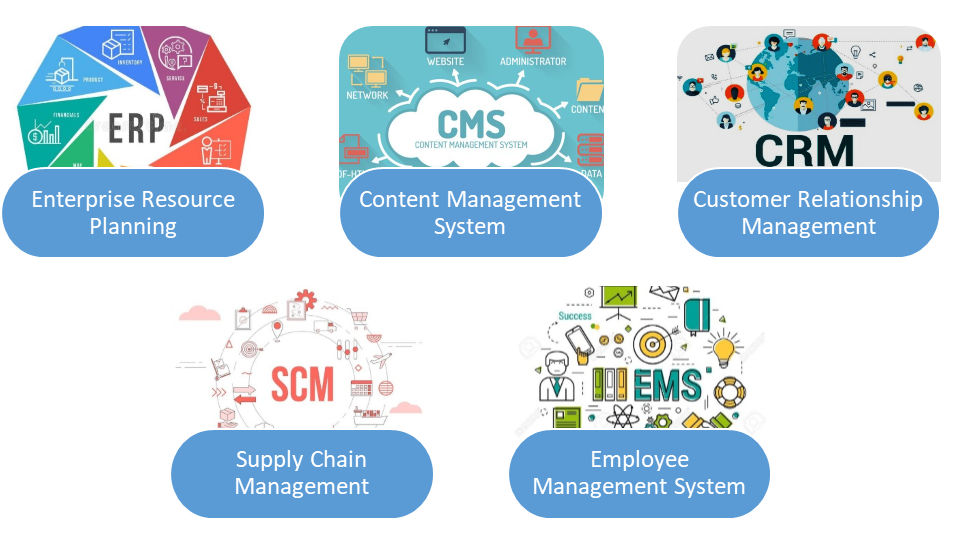
1. Enterprise Resource Planning (ERP)
Enterprise Resource Planning (ERP) systems integrate various business processes and functions into a unified platform. Custom ERP solutions are designed to meet the unique requirements of an organization, including finance, human resources, inventory management, and more. By consolidating data and automating workflows, custom ERP solutions empower businesses to make informed decisions and optimize resource allocation.
2. Content Management System (CMS)
A Content Management System (CMS) facilitates the creation, modification, and management of digital content. Custom CMS solutions are tailored to an organization’s content strategy, enabling efficient collaboration, version control, and seamless content publication. Customization ensures that the CMS aligns with the specific needs and workflows of the organization, promoting effective content management.
3. Customer Relationship Management (CRM)
Custom CRM solutions are instrumental in managing and nurturing customer relationships. These systems are designed to meet the unique needs of an organization’s sales, marketing, and customer service teams. They centralize customer data, automate communication, and provide insights to enhance customer interactions, fostering loyalty and driving business growth.
4. Supply Chain Management (SCM)
Supply Chain Management (SCM) involves the coordination of various processes, from procurement to distribution. Custom SCM solutions optimize supply chain operations by providing real-time visibility, demand forecasting, and inventory management. These solutions enhance efficiency and responsiveness in a dynamic market by addressing the intricacies of an organization’s supply chain.
5. Employee Management Software (EMS)
Employee Management Software (EMS) addresses HR and workforce management needs. Custom EMS solutions streamline processes such as payroll, attendance tracking, performance management, and employee engagement. Tailoring these solutions to the organization’s structure and policies ensures accurate and efficient human resource management.
Unique Software Development for Distinct Business Needs
Different business processes and distinct business needs require unique software development for custom software. Custom Enterprise IT solutions play a pivotal role in digital transformation by aligning technology with company goals. They empower businesses to transform challenges, capitalize on opportunities, and achieve sustainable success in an ever-evolving digital market.
Unique Software Development, the leading software development in the US, offers everything that your organization needs under one roof. From web development to app development, from AI to ML and AR/VR, and from Blockchain to IoT, each solution is uniquely designed per needs. The premium expertise and diverse experience of developers is their core strength, let alone their professional etiquette and business ethics. It is the best choice for various IT services and apps.
Conclusion
Software Product Development is at the heart of digital transformation for millions of businesses around the globe. Entrepreneurs and enterprises are opting for flexible and scalable custom apps to align with their objectives and unique business processes. The meaning, importance, and process satiate the quest for information for knowledge seekers. Additionally, the technical documentation and latest trends aid in setting the direction of a development project. Moreover, the project management guide and types of software lay the foundation of key requirements. Contact Unique Software Development for custom solutions for your distinct business needs.






